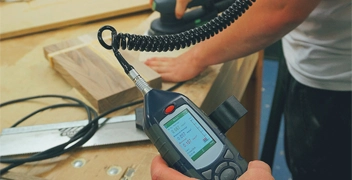Welcome to Didac
Study Programmes, Short Courses & Apprenticeships
Delivered directly at your workplace or in the Woodwise Academy on the banks of the River Avon, Bristol. Funding is available in England for qualifying Study Programmes & Apprenticeships
Short Courses
Furniture, Woodworking Machinery, Fork Lift Trucks, Industrial & Construction Plant
Safe Operation of Woodworking Machinery, ITTSAR Accredited Fork Lift Truck Driving, Plant Equipment all delivered directly at your workplace.
Health & Safety
Consultancy & Training
Audits, risk assessments, safe systems of work, noise & dust assessments, RIDDOR Accident Reporting, COSHH, toolbox talks, short courses, competent person support.
16-18 Study
Programmes
The Study Programme at the Woodwise Academy, an alternative to college or sixth-form, is a twelve-month course leading to the Level 2 Diploma in Furniture Making.
Student & Employer
Support
If you are student or employer looking for a short courses or apprenticeships, do get in touch to let us know what you are looking for.
Apprenticeship
Programmes
Furniture & Woodworking Apprenticeships in : Making, Fitting & Machining
Fitted Furniture Design
Warehouse & Management Apprenticeships in Trade Supplier, Customer Service & Supply Chain Warehouse Operative
Who We Are
For over 25 years, Didac has been delivering apprenticeships and short courses to the furniture, joinery and woodworking sectors.
Warehouse and management apprenticeship are delivered across many sectors, but the merchanting is a particular speciality.
Didac has specialist Health & Safety expertise in the woodworking industry; and offers ITSSAR accredited fork lift truck and construction equipment training to all sectors.
Didac prides itself with sector specific short courses and apprenticeships, all of which are delivered within your workplace.
-
Latest News
Congratulations to Jack Sirl in our Furniture & Woodworking Team on passing his Level 4 Certificate in Education & Training Qualification. His dedication and focus to complete in a timely manner was amazing.
Learn more -

Attention all graduates Apprenticeship eligibility
You can start an apprenticeship whether you’re starting your career, want a change or you're upskilling in your current job. You can have a previous qualification like a degree and still start an...
Learn More -

Noise & Dust in Woodworking
Urgent Sector UpdateThe Wood Safety Group, representing all sectors of the woodworking industry issued urgent guidance on wood dust and Noise. It covers Respiratory Protective Equipment (RPE), use of Powered...
Learn More
Who We Are
For over 25 years, Didac has been delivering apprenticeships and short courses to the furniture, joinery and woodworking sectors.
Warehouse and management apprenticeship are delivered across many sectors, but the merchanting is a particular speciality.
Didac has specialist Health & Safety expertise in the woodworking industry; and offers ITSSAR accredited fork lift truck and construction equipment training to all sectors.
Didac prides itself with sector specific short courses and apprenticeships, all of which are delivered within your workplace.
Learn moreLatest News
Congratulations to Jack Sirl in our Furniture & Woodworking Team on passing his Level 4 Certificate in Education & Training Qualification. His dedication and focus to complete in a timely manner was amazing.
Learn moreThinking about your next step in Personal Development for yourself or your staff?
Give us a call – We’ll do our best to help guide you.


